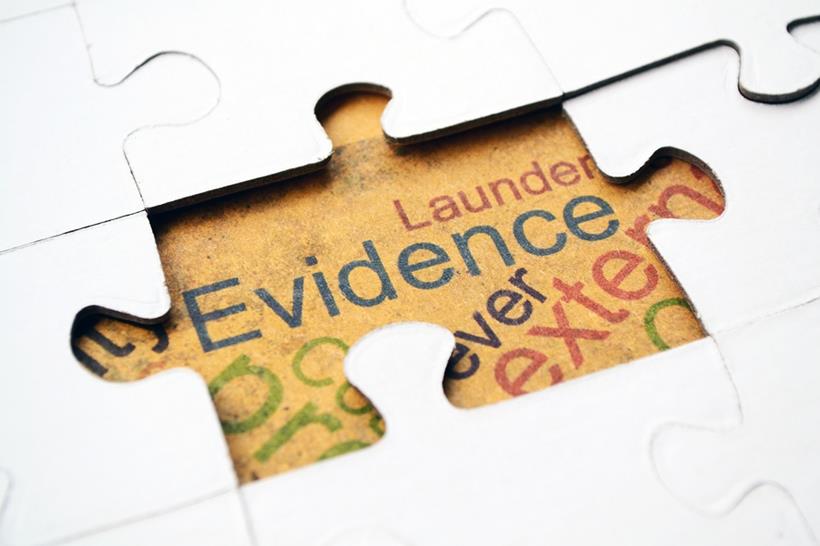
For the last five years I have worked to help others understand the huge return on investment available from a well-implemented Electronic Document and Records Management System (EDRMS). It’s been both a pleasing and frustrating journey.
In that time, I’ve worked with leaders across many functions: IT, Operations, Customer Management, Finance, Legal, Human Resource Management, the C-Suite, and – of course – Records Management. I’ve spent time trying to help each of them grasp the return on investment argument to the point where they put enough resources and planning into the project to reap the benefits. But in every case, I’ve encountered roadblocks, each of which needs to be broken down to improve the chances of project success.
Getting through the roadblocks has been like peeling the layers of an onion. In this onion, the layers are interconnected; the inner layers can have big impacts on the outer layers and vice-versa. So sometimes, the way through a particular roadblock is to address another issue first. On top of that, some of the connections aren’t visible until after you have removed some layers. That’s when it dawns on you that you should have been working on resolving a particular issue a long while ago.
In reflecting on these roadblocks, I’ve been able to distil them into six groups:
- Information is not regarded as an asset.
- Regardless of how robust it looks on paper, information governance is weakly administered.
- Business process improvement efforts are reactive.
- The status quo gives some individuals power, which they wish to defend.
- The responsibility for managing information is centralised.
- The framework for managing information is weakly supported.
What I’ve found is that if one or more of these statements can be used to describe the status quo for a client, and the business case for the EDRMS implementation doesn’t directly address it, then the true return on investment of an EDRMS simply will not be recognised. Also, even if budget is allocated for a project – whether that project is for digitisation, or EDRMS implementation, or an upgrade project – and one or more of these statements is true, then the likelihood of achieving a solid state of return on investment is low.
Where one or more of these statements is true, those charged with seeking a return on investment, even it is a personal motivator, tactics which seek to change those states of being need to be devised and implemented to accelerate the discovery of the organisation on what is required to deliver a high ROI.
Information is not regarded as an asset
This the normal state of being from my observations. Despite fine words dotting mission statements and even the odd policy document, there are very few organisations that value information as an asset in practice. If information was managed as an asset you would see:
- Information valued on the balance sheet (OK, the accounting profession is still struggling with how to set rules for this, so it is unlikely; if it was though, you could be assured of a very different level of interest by the CEO and CFO in your digitisation project)
- An existing information governance framework which comprises elements of strategy, policy, systems, support, quality assurance, and continuous improvement (Dwyer & Linton, 2014)
- An information register that lists all information and its relative value, the technology that manages it, an accountable party, and responsible parties
- Audit playing an interest in the way that users do or do not follow policy and procedures in the management of information on the information asset register
- The executive team and even the board taking an interest in how well key information assets are being managed, and receiving reports with performance indicator trends and exceptions
- The executive team taking an interest in projects created by operational teams to continuously improve the management of information and therefore its value
I’ve seen elements of the above non-exhaustive checklist after we have completed a consultancy (he says without a skerrick of modesty), but never before.
The approach which brings us the most success in at least getting this topic started in a debate is to engage audit or finance, or both, with industry discussion papers on the topic, and with industry and organisation examples where not treating information as an asset has destroyed financial value. Destroying financial value, i.e. negative risk, is a paradigm which is much more recognisable for audit and finance than talking up the productivity gains – at least at the start of the conversation.
There are many good research project outputs and white papers available from the usual sources of Gartner and McKinsey, however, one of the more relevant to this whole topic which you might find useful is provided by SAAS. (SAAS, 2014).
Governance is weak in practice
Unfortunately even when a governance structure exists, it is often weakly administered. Information policy is not enforced, usually due to that fact that the policy is not converted into changes in written processes and procedures. Or any changes that are made, are not adequately communicated or presented in a form from which people can learn. In addition there is usually not a system of performance management which helps ensure people – especially managers and team leaders – understand they have an obligation to comply with what is considered the norm for the organisation.
The fact that governance is weakly administered in the management of information is not unusual. My experience is that with the exception of financial transactions, governance is weak in organisations full stop. It’s only a large minority of organisations that have good governance over issues as vitally important as quality and safety, so it is no surprise that information management governance is often poor.
What can you do?
Educating audit in the risks associated with the poor management of information is a good starting point. This may take some time and you will have to marshal your evidence from external and internal case studies. Your evidence will have to demonstrate how poor information management has resulted in risk events occurring within your organisation or within your industry that have had unacceptable consequences within the context of risk your organisation manages itself against.
If case studies are not available, try building credible scenarios and test your existing governance of information against them to see what the consequences are. Involve audit in such an exercise.
Business process improvement is reactive
Scenario planning in risk management is not a common practice. Under scenario planning, business processes are tested through a desktop exercise, to test business processes against possible risk events occurring. Conducting risk analysis in this proactive manner means that risks can be assessed, evaluated against the risk appetite of the organisation, and treatments developed for them. The norm, unfortunately, is that risks are identified when events occur and treatments devised to ensure “this never happens again”.
There is little in the way of proactive analysis of negative risks with regard to information management. We rely too much on the ‘six o’clock news’ events to manage or even recognise information risk. If there is little negative risk scenario planning, there is even less positive scenario planning.
Much of the lack of positive scenario planning comes from a lack of understanding of the functionality of modern EDRM systems by middle to senior executives outside the records/information/knowledge fraternity. Although, one has to admit, the term ‘Big Data’ has got many executives excited.
My experience with middle to senior executives is that they do not understand, or have myths embedded in their understanding of the functionality of an EDRMS compared to shared drives and bespoke systems. For example, Legal is often wed to a bespoke case management system and finds it hard to acknowledge that an EDRMS can provide the functionality of a case management system.
Sources of power are defended
Any organisation has a group of usually unrelated gurus. The people who know how the ‘system’ works, or who know where to find information, or who can recall information they have converted to knowledge. They can be in any function. They usually have a system they use to get things done. Often that system includes where to store information and a process of manual workflows that accompanies decision-making.
Getting these gurus and the teams they work in to abandon their ways of working in favour of an EDRMS is usually difficult. Often this is the case because they access power through their knowledge of the existing system and get an ego boost from other people’s need to ask them where to find information or how to complete a process.
The implementation of an EDRMS that has workflow functionality, a vastly superior search capability than currently available with shared drives, and that uses a business classification scheme completely foreign to the existing way of working, creates a situation where loss of power is a distinct possibility for the guru.
How do you overcome this concern?
Usually, an EDRMS will have functionality that solves problems that the guru and the team they work in do not realise they have. Start by getting to understand the process they want to protect. When you have demonstrated that you clearly understand the process, don’t immediately try to demonstrate how the EDRMS can replicate the process. Ask questions about limitations of the existing process. Enquire enough, and you will usually find an issue which the EDRMS can resolve. Then ask the question “Would it be helpful if I could show you how you could solve that issue?” Then go on to demonstrate how the EDRMS can easily replicate their existing process too.
The responsibility for managing information is centralised
In organisations of say 100 or more users of an EDRMS, maintaining a centralised model for managing information creates several issues:
- Individual users feel little responsibility for managing information and as a result information is managed poorly.
- The centralised team tends to have an archiving responsibility and are not directly engaged with the business processes; this means opportunities are lost to manage the full life cycle of information.
- The EDRMS functionality is not optimised to make business processes more efficient and reduce risk.
- Members of the broader user community do not understand the business classification scheme and hence information is stored in an ad-hoc manner.
- Myths and stories abound about the limitations of the EDRMS which erroneously limit its appeal to be used as a business improvement piece of software.
- Senior managers, including those in IT, do not understand the features and advantages if the EDRMS and certainly have little idea of the benefits. The EDRMS does not gain its rightful place in the systems architecture.
I could go on. The point being that centralised models for managing information (rather than a centralised model for developing, monitoring and improving the framework and decentralised management of information within that framework) helps maintain the belief that managing information is unimportant and is something that other people do.
The framework for managing information is weakly supported
Even if there is a good framework for managing information, if the performance management system of defining roles and formal and informal coaching and counselling does not include the management of information as an important outcome, deviation from good practice becomes the norm.
Cottage industries on managing information develop in ways which, whilst helpful to an individual, are generally damaging to the management of information between teams and across the organisation overall.
Audit and human resource management both need to be convinced, assuming that the organisation has determined to manage information as an asset, that performance indicators pertaining to the management of that asset need to be included in individual scorecards, and in the standards against which the organisation is evaluated for compliance. This is particularly the case for managers.
One roadblock at a time
Removing each of these roadblocks is difficult. Trying to remove all of them at once is almost impossible even with senior management intervention. The key is to build a strategy to remove the roadblocks. Start where you can make an impact. Choose the path of least resistance.
This might mean, for example, picking on a function within the business that has employees who have worked in other organisations where they do understand the benefits of information management. Or perhaps, picking on a process where it is clear that there will be major benefits.
Whatever the route you choose, don’t despair at the lack of progress. Keep on probing to remove the roadblocks. The return on your investment of time and effort will be worth it.
Works Cited
Dwyer, K., & Linton, M. (2014, November 9th). Unlocking the value of information. Retrieved from Change Factory: http://changefactory.wpengine.com/our-thinking/articles/unlocking-the-value-of-information/
SAAS. (2014, November 9th). Retrieved from Digital Policy Alliance: http://www.eurim.org.uk/activities/ig/InformationAsset.pdf






